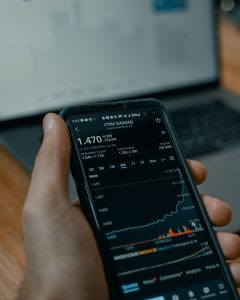Understanding the Basics: How Does Forex Trading Work?
Forex trading, also known as foreign exchange trading, is the process of buying and selling currencies with the expectation of making a profit. It is the largest financial market in the world, with a daily trading volume of over $6 trillion. Forex trading offers numerous opportunities for individuals to generate income, but it is important to have a solid understanding of how the market works before diving in. In this article, we will explore the basics of forex trading and how it operates.
The Forex Market:
The forex market is a decentralized global market where currencies are traded. Unlike traditional stock markets, forex trading does not have a physical location. Instead, it operates electronically over-the-counter (OTC), meaning that transactions are conducted via computer networks between traders around the world.
Currencies are traded in pairs, with the most popular being the EUR/USD (Euro/US Dollar) pair. Other commonly traded pairs include GBP/USD (British Pound/US Dollar), USD/JPY (US Dollar/Japanese Yen), and USD/CHF (US Dollar/Swiss Franc). Each currency pair represents the exchange rate between the two currencies. For example, if the EUR/USD exchange rate is 1.10, it means that 1 Euro is equivalent to 1.10 US Dollars.
Participants in the Forex Market:
There are several types of participants in the forex market, including banks, financial institutions, corporations, governments, and individual traders. Banks and financial institutions are the largest players in the market, accounting for the majority of the trading volume. They engage in forex trading to facilitate international trade and manage currency risks.
Individual traders, also known as retail traders, are the smallest participants in the market. They trade forex for speculative purposes, aiming to profit from the fluctuations in currency exchange rates. With the advent of online trading platforms, retail traders now have easy access to the forex market and can participate in trading from the comfort of their own homes.
How Forex Trading Works:
Forex trading involves buying one currency and selling another simultaneously. Traders speculate on the direction of currency exchange rates and aim to profit from the price movements. For example, if a trader believes that the Euro will appreciate against the US Dollar, they would buy the EUR/USD currency pair. If their prediction turns out to be correct and the exchange rate rises, they can sell the pair at a higher price to make a profit.
To facilitate trading, forex brokers provide traders with access to trading platforms. These platforms allow traders to place buy and sell orders and provide real-time price quotes. Traders can choose to trade manually, where they make decisions based on their analysis and execute trades themselves, or they can use automated trading systems known as Expert Advisors (EAs) to execute trades on their behalf.
Forex trading operates 24 hours a day, five days a week, as the market is open in different time zones around the world. This allows traders to trade at any time, making it a flexible market that caters to various trading styles.
Factors Affecting Currency Exchange Rates:
Currency exchange rates are influenced by a multitude of factors, including economic indicators, political events, and market sentiment. Major economic indicators such as GDP (Gross Domestic Product), inflation rates, and employment data can have a significant impact on currency exchange rates. Positive economic data typically strengthens a currency, while negative data can weaken it.
Political events, such as elections or geopolitical tensions, can also cause volatility in currency markets. For example, uncertainty surrounding Brexit negotiations between the UK and the European Union led to significant fluctuations in the value of the British Pound.
Market sentiment plays a crucial role in forex trading. Traders’ perceptions and emotions can drive currency prices up or down. Positive news can create a bullish sentiment, causing traders to buy a particular currency, while negative news can create a bearish sentiment, prompting traders to sell.
Risk Management in Forex Trading:
Forex trading involves risks, and it is important for traders to implement risk management strategies to protect their capital. One common risk management technique is the use of stop-loss orders. A stop-loss order is an instruction to automatically close a trade at a predetermined price level, limiting potential losses.
Traders can also use leverage to amplify their trading positions. Leverage allows traders to control large positions with a fraction of the capital required. However, leverage can also magnify losses, so it should be used with caution.
Conclusion:
Forex trading is a dynamic and exciting market that offers numerous opportunities for individuals to profit from currency price movements. Understanding the basics of how forex trading works is essential before venturing into the market. By familiarizing themselves with the forex market structure, participants, trading mechanisms, and risk management techniques, traders can increase their chances of success in this lucrative market.






